Red Light Therapy & Traumatic Brain Injury
Red Light Therapy & Traumatic Brain Injury

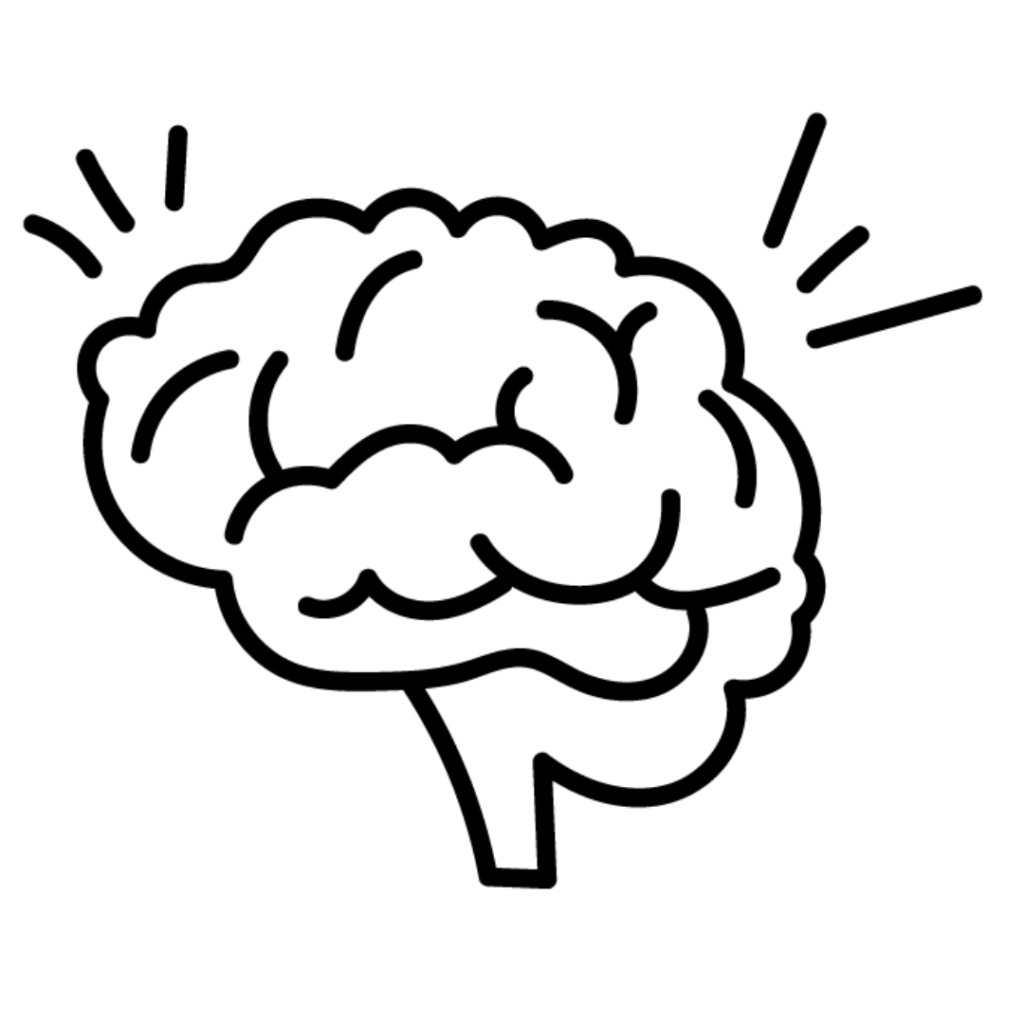
What is Traumatic Brain Injury?
Traumatic Brain Injury (TBI) occurs when the brain is damaged by an external force, like an impact, blast, or rapid acceleration/deceleration. Common causes of TBI include falls, sports injuries, vehicle accidents, and physical assaults. Damage from TBI’s can lead to long-lasting and even permanent impairment of brain function. TBI’s are common injuries in the US, with approximately 1.5 million Americans experiencing a TBI annually.
TBI is considered an umbrella term that refers to any brain injury caused by an external source. TBI’s can be categorized by severity, ranging from mild to severe, and have unique characteristics:
- Mild TBI – Causes temporary confusion and headache.
- Moderate TBI – Causes prolonged confusion and cognitive impairment.
- Severe TBI – Causes significant cognitive deficits and long-term complications.
TBI’s can also be categorized by timeframe, including both acute (short-term) and chronic (long-term) effects. The acute phase last from hours to weeks, while the chronic phase lasts from weeks to years, depending on the severity of the TBI.
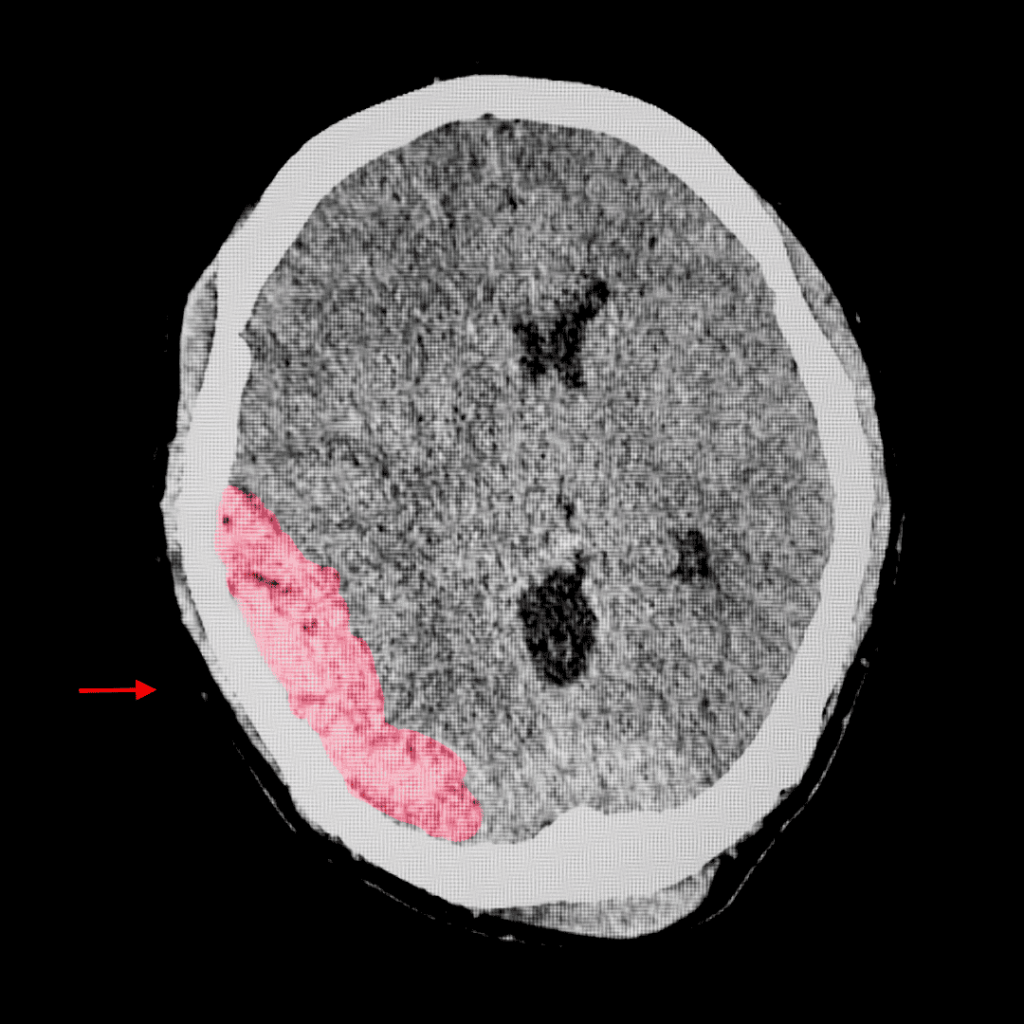
Two TBI-related terms that may be familiar to people are concussions and Chronic
Traumatic Encephalopathy (CTE). Concussions are a type of mild TBI, and although symptoms usually resolve within days to weeks, they can still have long-term effects, especially with multiple incidents. One potential long-term consequence of repeated concussions is CTE, a progressive neurodegenerative disease believed to be caused by repeated head injuries, including multiple mild TBIs.
Treatment for TBI varies greatly depending on the severity of the injury. In general, it involves stabilization, symptom management, and rehabilitation. The primary goal of treatment during the acute phase is to protect brain tissue and focuses on cognitive rest and addressing symptoms. In the chronic phase, the primary goal of treatment is to restore cognitive, motor, and emotional function. Emerging treatments such as Red Light Therapy may be beneficial in supporting the brain during both the acute and
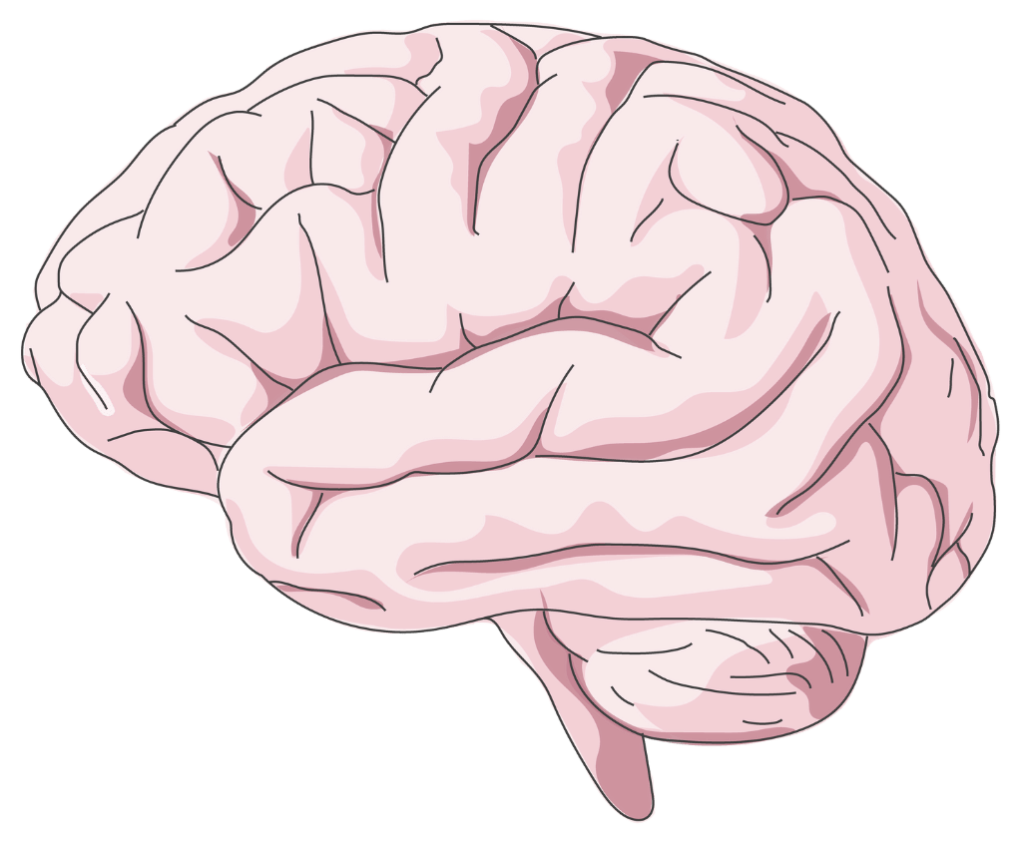
How does TBI affect the brain?
Before we consider how Red Light Therapy may be used to support brain health following TBI, let’s take a closer look at the three major pathological processes that occur in the brain during this type of injury.
- Neuroinflammation: TBI causes neuroinflammation, which occurs in the hours to days following the injury. Neuroinflammation is inflammation of the brain, which can be helpful in the short term but is harmful when prolonged, leading to chronic neurodegeneration. Excess neuroinflammation is linked to brain fog, mood disorders, and an increased risk of neurodegenerative diseases such as CTE.
- Oxidative stress: Following a TBI, the brain produces excessive amount of reactive oxygen species (ROS), which can lead to oxidative stress. Oxidative stress can overwhelm our antioxidant defenses and cause damage to cells in the brain, worsening brain injury.
- Impaired brain energy metabolism: TBI impairs brain energy metabolism, particularly the ability of the brain to use glucose, which leads to a metabolic crisis where neurons are deprived of energy. After an initial phase of excessive glucose use, there is a decrease in glucose availability that can last from days to weeks, which makes neurons more vulnerable to damage and impairs healing.
These three factors interact and include many overlapping molecules. For example, both neuroinflammation and impaired brain energy metabolism can lead to an increase in ROS production, further worsening oxidative stress. Similarly, impaired energy metabolism exacerbates neuroinflammation. This creates a self-perpetuating cycle of damage, which is why TBI recovery can be slow and why some people experience persistent symptoms for weeks, months, or even years following the injury.
How does Red Light Therapy support brain function?
Red Light Therapy is a promising tool for supporting the brain during TBI because it targets all three foundational brain pathologies, including neuroinflammation, oxidative stress, and impaired brain energy metabolism. Using both red and near infrared light (especially near infrared, which has deeper penetration), Red Light Therapy delivers wavelengths that interact with light sensitive molecules inside brain cells.
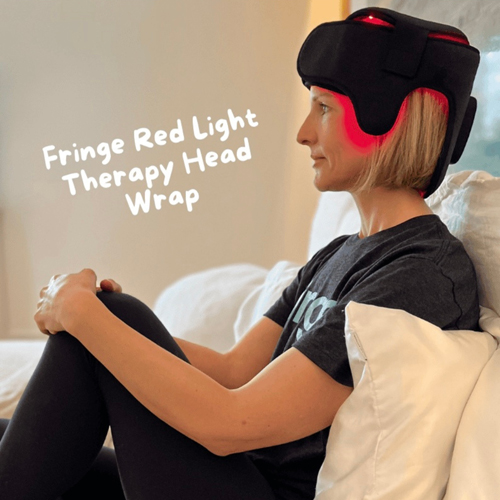
Here's how Red Light Therapy affects neuroinflammation, oxidative stress, and brain energy metabolism:
- Neuroinflammation: Red and near infrared light wavelengths have anti-inflammatory effects, and unlike anti-inflammatory medications (such as NSAID’s), do not cause side effects. Studies have found that light therapy affects levels of many molecules involved in inflammation, including ROS, reactive nitrogen species, and prostaglandins. Red and near infrared light therapy have specifically shown to reduce neuroinflammation.
- Oxidative stress: Light is absorbed in cells by molecules called chromophores, many of which are found inside the mitochondria. Mitochondria are involved in regulating the production the ROS that cause oxidative stress when present in high amounts. Light therapy has been shown to modulate oxidative stress and ROS production.
- Impaired brain energy metabolism: Through its impact on mitochondria, light also affects metabolism. In addition to regulating ROS production, mitochondria also make ATP, which is the energy currency of the cell, via a chain of molecules that includes cytochrome c oxidase. Cytochrome c oxidase is activated by both red and near infrared light, which increases ATP synthesis and provides more energy to brain cells.
As well, there are additional effects of Red Light Therapy in the brain that may help to support healing from TBI. This includes increasing brain blood flow, supporting brain adaptability, and regulating neuron cell death. Collectively, there are many ways in which Red Light Therapy may be used therapeutically in TBI, and these have been explored in several clinical and pre-clinical studies of both acute and chronic TBI.


Is there evidence to support the use of Red Light Therapy in TBI?
Yes! Red Light Therapy has been investigated in several studies of TBI using a range of different experimental approaches. These studies can be broken down by timeframe into both acute and chronic TBI, as well as by study type, including clinical (using humans as subjects) and pre-clinical (using animals as subjects).
Acute TBI
The acute phase of TBI immediately follows the onset of injury. Unfortunately, this creates some challenge in coordinating and executing research studies, since it is difficult to recruit human subjects into a research study who have just experienced a head injury. As a result, most of the research in this TBI phase has been done using animals given a head injury in a controlled environment. In a 2023 systematic review of 17 animal studies that used Red Light Therapy immediately post-TBI, it was found that early light therapy intervention could improve neurological outcomes and reduce the size of trauma-associated brain lesions. Optimal results were associated with both red and near infrared light, initiation within 4 hours post-injury, and up to three daily treatments. One human study was included in the review of Red Light Therapy for acute TBI, which suggested safety and feasibility, but treatment efficacy could not be determined.

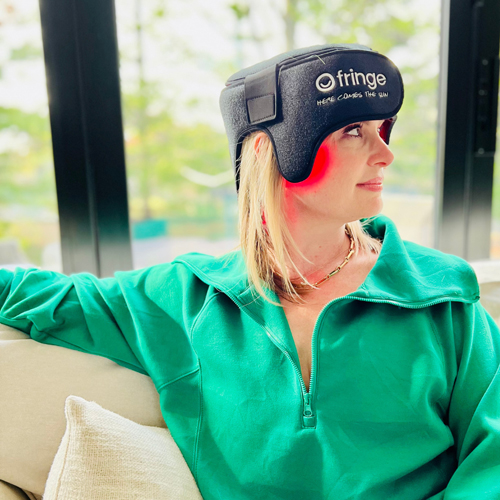
Chronic TBI
Many more human studies have explored the use of Red Light Therapy in the chronic phase of TBI, which occurs weeks to months after the initial trauma. In a 2024 review of 16 human studies, overall improvements in neuropsychological outcomes and increased cerebral blood flow following transcranial PBM were observed. Here are some highlights of the clinical research findings:
How can I use Red Light Therapy in TBI?
- 2019 study of 12 military veterans with chronic TBI lasting more than 18 months – Following six weeks of application of both red and near infrared light to the head using LED lights, neuropsychological scores and brain blood flow were improved.
- 2020 case report of 23-year professional hockey player with a history of concussions, and symptoms of headaches, mild anxiety, and difficulty concentrating – Following 8 weeks of application of near infrared light to the head using LED lights, many positive findings were observed, including increased brain volume, improved brain connectivity, increased brain blood flow, and improved neuropsychological test scores.
- 2023 study of four retired professional football players with suspected CTE – Following application of near infrared light to the head using LED lights three times per week for six weeks, a wide range of improvements were noted, including improved sleep, reduced depression, decreased PTSD, and decreased pain. Analysis of brain function showed several improvements.
Collectively, research looking at the use of Red Light Therapy to support healing from TBI has yielded positive outcomes, both subjective (such as improved mood and decreased pain), and objective (such as increased brain volume and blood flow). There is stronger support for the use of Red Light Therapy in chronic TBI, but pre-clinical evidence supports the potential for benefit during the acute phase of injury.
TBI Recovery
Managing TBI involves a combination of stabilization, symptom relief, and rehabilitation, each playing a crucial role in recovery. Red Light Therapy is a safe and effective tool that can support healing throughout all three stages. While it can be conveniently done at home using a Red Light Therapy device, professional supervision is recommended during the acute phase to ensure safe and effective application. When exploring the range of available options, here are four things to consider:
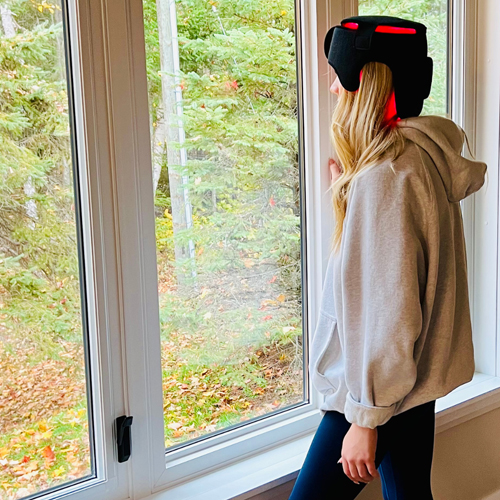
- Light wavelength – The wavelength of light determines its color, with red light in the range of 620-700nm and near infrared light in the range of 700-1100nm. Although near infrared has been used most often to support healing from TBI, some studies have also found benefit from red light. Light with wavelengths between 600 and 1300nm have been found to penetrate maximally into the brain. So, look for products that provide both RL and NIRL in combination.
- Light intensity – Light intensity refers to the amount of light being delivered by a device, also referred to as power density. Studies of Red Light Therapy and TBI have used a range of intensities, from 10-100mW/cm2, and there is no clear indication that a particular intensity must be used. Devices across a range of intensities may provide benefit, and consumers aren’t limited to a specific intensity range.
- Type of device – Your personal level of comfort with a device is important. If it isn’t easy to use, and if it doesn’t feel good on your body, you probably won’t use it consistently. Many consumers find the most convenient devices to use are wireless, with a rechargeable battery. It is also important to use a device that can be adjusted to fit snugly on the head. Think about your personal preferences and choose a device that fits your criteria.
- Light Source – Light therapy is administered using either laser or LED lights. While early light therapy research was done using lasers, LED lights have become much more popular over the last decade. For at home use, look for a device that uses LED lights as safe and affordable option.
The next step after selecting a Red Light Therapy device is to determine the treatment protocol. During the acute phase of TBI, it is recommended to consult with your health care provider to get their professional guidance regarding the most appropriate protocol for your case. During the chronic phase of TBI, support from a health care professional is also recommended, but people may be more independent during this period. Based on available clinical research, 10-40 minute treatment sessions, 3 to 5 times a week, are recommended. Do not exceed more than one session every 24 hours.
Conclusion
Red Light Therapy is a safe, affordable, and highly effective tool for supporting at-home recovery from TBI. By targeting the three core drivers of brain injury—oxidative stress, impaired metabolism, and neuroinflammation—it offers a scientifically backed approach to healing. Research suggests benefits across all stages of TBI, from the critical early hours to years post-injury. When choosing a device, look for red and near-infrared LED technology that aligns with your needs for comfort and convenience, empowering you to take an active role in your recovery.
For more information about Fringe light products, go to: https://fringeheals.com/shop-all-products/
about the author
Dr. Genevieve Newton, DC, PhD spent close to 20 years as a researcher and educator in the field of nutritional sciences before joining Fringe as its Scientific Director. Gen’s job is to “bring the science” that supports Fringe’s products and education. She is passionate about all things Fringe, and is a deep believer in healing body, mind and spirit using the gifts of the natural world.
The contents in this blog; such as text, content, graphics are intended for educational purposes only. The Content is not intended to substitute for professional medical advice, diagnosis, or treatment. Always seek the advice of your healthcare provider.
